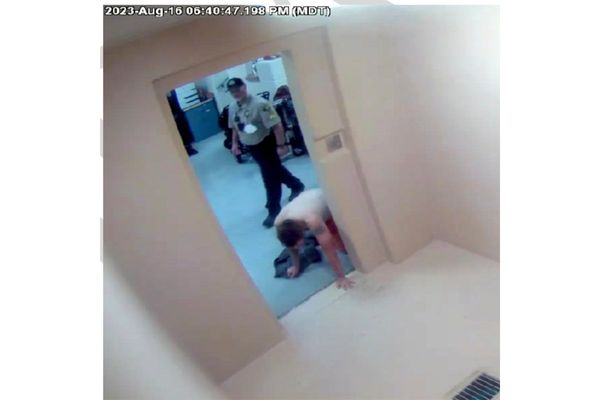Media plays an integral role in society, shaping public opinions and influencing how individuals perceive various issues, including crime. Over the years, its influence has expanded with the growth of mass communication platforms, from traditional print and television to the dominance of social media today.
Understanding how media impacts public perception of crime is crucial, as it directly affects societal behavior, trust in the justice system, and public policies.
The Media's Impact on Crime Perception
The media has the power to construct narratives around crime that can either reflect reality or distort it. News outlets often choose which stories to report, how much attention to give them, and the language used in their coverage.
For example, when media outlets focus disproportionately on violent crimes, they may give the impression that such crimes are more common than they are in reality. This phenomenon, often referred to as "media sensationalism," creates fear and anxiety within communities, even in areas where crime rates may be declining.
Moreover, the framing of certain groups in association with criminal activity can perpetuate stereotypes. For instance, certain communities may be unfairly portrayed as more prone to criminal behavior, which fuels biases and systemic discrimination.
Media framing often extends to the justice system, where crimes involving certain demographics receive more extensive coverage, influencing public opinions about fairness and equity in the legal process.
The ability to critically analyze these representations of crime is vital for professionals in the field of criminology. Studying societal influences on crime perception, as explored in programs like a Bachelor of Arts in Criminology, equips individuals with the tools to understand the interplay between media, society, and criminal behavior.
Such academic foundations allow professionals to critically evaluate how media shapes public discourse around crime and justice.
Media and the Fear of Crime
The media’s emphasis on violent and dramatic crimes creates what researchers call a "fear of crime." This fear is often disproportionate to the actual likelihood of becoming a victim of crime. For instance, studies have shown that even when violent crime rates decrease, constant exposure to crime reports on television or social media can lead people to believe that crime is rising.
This fear has tangible consequences. It can influence public behavior, such as avoidance of public spaces or reluctance to engage with certain communities. Furthermore, the fear of crime impacts voting behavior, with individuals supporting policies and leaders who promise tough-on-crime approaches, even when these measures may not align with the real issues at hand.
The Role of Social Media in Crime Narratives
Social media has introduced new dimensions to how crime is reported and perceived. Unlike traditional media, which relies on professional journalists and editors, social media allows anyone to report or comment on crime. While this democratization of information sharing has its advantages, it also brings significant challenges.
For one, unverified information about crime spreads quickly on social platforms, often without fact-checking. Viral posts or videos showing criminal activity can evoke strong emotional reactions, even when the context is missing, or the information is exaggerated.
As a result, public outrage is sometimes based on incomplete or misleading narratives, which can escalate tensions and lead to conflicts.
The Influence of Crime Dramas and Documentaries
Beyond news outlets and social media, entertainment media also plays a significant role in shaping public perception of crime. Crime dramas, documentaries, and true crime podcasts have surged in popularity, drawing millions of viewers and listeners worldwide. These formats often glamorize criminal activity or sensationalize investigative procedures, leading to misconceptions about how crimes are committed and solved.
For instance, television shows frequently depict forensic science and law enforcement as capable of solving crimes quickly and flawlessly. In reality, investigations are often complex, time-consuming, and prone to human error. Such portrayals can create unrealistic expectations about the justice system's efficiency and reliability.
How Media Shapes Policy and Justice
The media’s role in influencing public perception of crime extends to its impact on policymaking and the justice system. Public opinion, shaped heavily by media narratives, puts pressure on lawmakers to respond to perceived crime trends. As a result, we often see policies driven by public demand rather than empirical evidence.
For example, the "tough-on-crime" policies of the past were fueled by media coverage that painted a grim picture of crime in certain eras. These policies led to higher incarceration rates but did little to address the root causes of criminal behavior, such as poverty, education, and mental health issues.
Moving Toward Ethical Media Practices
Given the media's profound influence on public perception, ethical practices are essential in crime reporting. News outlets and social media platforms must strive for accuracy, avoid sensationalism, and provide context to their stories. Balanced reporting that highlights both the challenges and successes of the justice system can foster a more informed and empathetic society.
Furthermore, media consumers play a role in shaping this landscape. By critically evaluating the information they consume, avoiding clickbait, and seeking multiple perspectives, individuals can reduce the impact of biased or misleading narratives.
All in all, the media wields significant power in shaping how society perceives crime, influencing everything from individual behavior to public policies. While it can inform and educate, it can also perpetuate fear, stereotypes, and misinformation.








